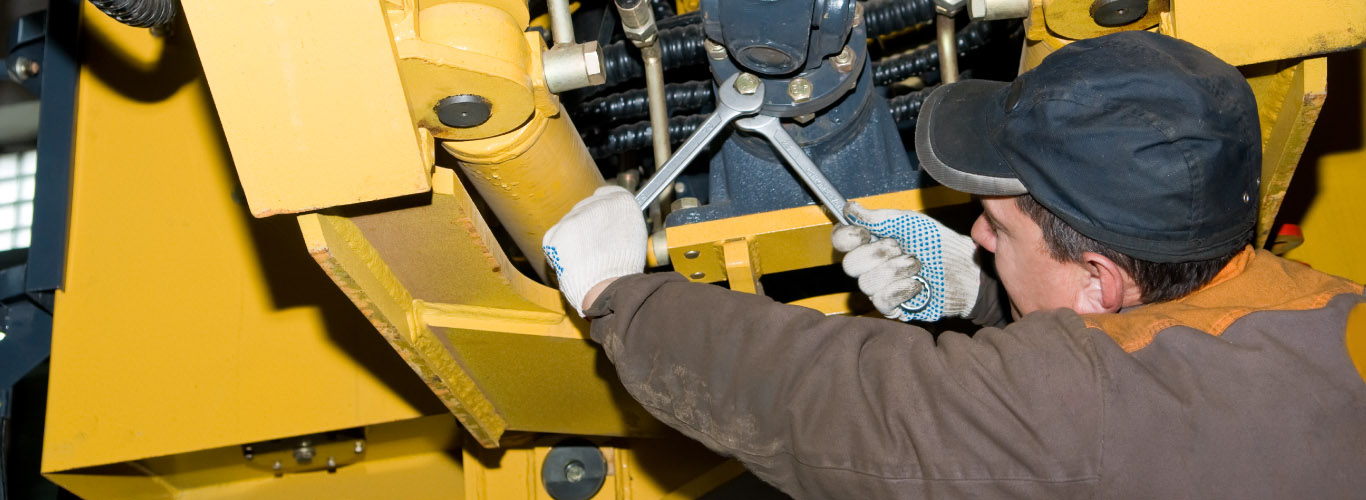The Dos and Don'ts
Proper tire selection, maintenance, and usage not only improves performance, but contributes greatly to a construction fleet's overall safety. Following good tire safety practices helps eliminate unnecessary risks to both operators and equipment and keeps worksites productive.
The Dos
Tire Tread Patterns Should Match Application
Matching the appropriate tread pattern to the application is critical to maintaining machine stability and operation while on the job. Overheating, puncturing, and tread separation can easily happen if you select the wrong tread pattern for the application and ground conditions. When choosing the right tires, pay close attention to the numbers that correspond to tire tread depth and what those numbers mean for specific applications.
| Type of tread | Tread depth | Used for |
|---|---|---|
| Rib tread | Standard tread depth | soft surfaces |
| Traction tread | Standard tread depth | soft surfaces, 1-to-1 lug-to-void ratio |
| Rock tread | Standard tread depth | hard surfaces, rocky conditions, 2-to-1 lug-to-void ratio |
| Smooth tread | 1.5x deeper than standard tread depth | hard surfaces where traction isn't a concern no lugs |
| Rock tread | 2.5x deeper than standard tread depth | severe working conditions 2-to-1 lug-to-void ratio |
| Smooth tread | 2.5x deeper than standard tread depth | conditions that call for wear-resistance, no lugs |
| Rib pattern | Shallow tread depth | applications that call for flotation and minimal ground disturbance |
Always Inflate Tires Properly
The greatest factor on tire performance and therefore machine performance is proper inflation. The most common misconception regarding tire pressure is inflating all tires to the same pressure, regardless of manufacturer. Bias and radial tires need to be inflated to different pressures because they are constructed out of different materials. Inflating all tires to the same pressure instead of following the manufacturer's specific guidelines can quickly cause safety issues. Be aware that tire pressure is also going to fluctuate throughout the day. The best time to check a tire's pressure is in the morning before any work has been completed; this will give the most accurate measurement. Checking tire pressure daily is ideal, and mandatory weekly, especially if the equipment is being used on different worksites or if ground conditions have changed.
Follow a Tire Maintenance Program
A tire maintenance program is a schedule that helps protect machines throughout their lifespans. It requires coordination between operators, fleet managers, owners, and tire dealers. Develop a schedule that works best for your jobs, that operators can easily understand, and that follows guidelines specified by tire manufacturers.
The Don'ts
Never Under-Ply
It is important when selecting new bias tires to match the ply rating to both the application and equipment. Ply rating measures the load carrying capacity and strength of bias tires. Higher ply ratings mean higher allowable air pressure and load carrying capacity. Choosing a tire not rated for the load at hand can cause failure and lead to safety issues. It's a good idea to select tires that carry the load at the lowest inflation pressure. Once you've chosen tires, make sure that operators don't overload the machines.
Never Disregard Tire Wells
It is never a good idea to guess if something will fit correctly or to mix and match tire components. You can put operators at risk as well as damage equipment easily without using a tire's proper wheel assembly. You should always follow the tire manufacturer's specific guidelines for mounting and dismounting procedures and only use the correct wheel assembly and components.
Never Disregard Your Operators
Record everything that can affect a tire's lifespan average haul distances, cycles completed, cycle times, days worked, number of shifts, peak speeds, and types of materials being moved for each piece of equipment. This will help you identify operator behavior that must be avoided. Rapid stops and starts, sharp turns, and excessive speed can lead to premature wear and tire degradation. The heavier the load, the greater the impact these bad behaviors will be on tires.
You also want to calculate operators ton-mile-per-hour (TMPH). To find the TMPH, multiply the average weight of the vehicle by the average speed of the vehicle. This will let you know how much a heat a tire generates based on how it's being operating. You never want to exceed the TMPH rating.
Following these dos and don'ts will help you better maintain your tires. It will keep your operators safe, your equipment running smoothly, and your overall tire costs low.

